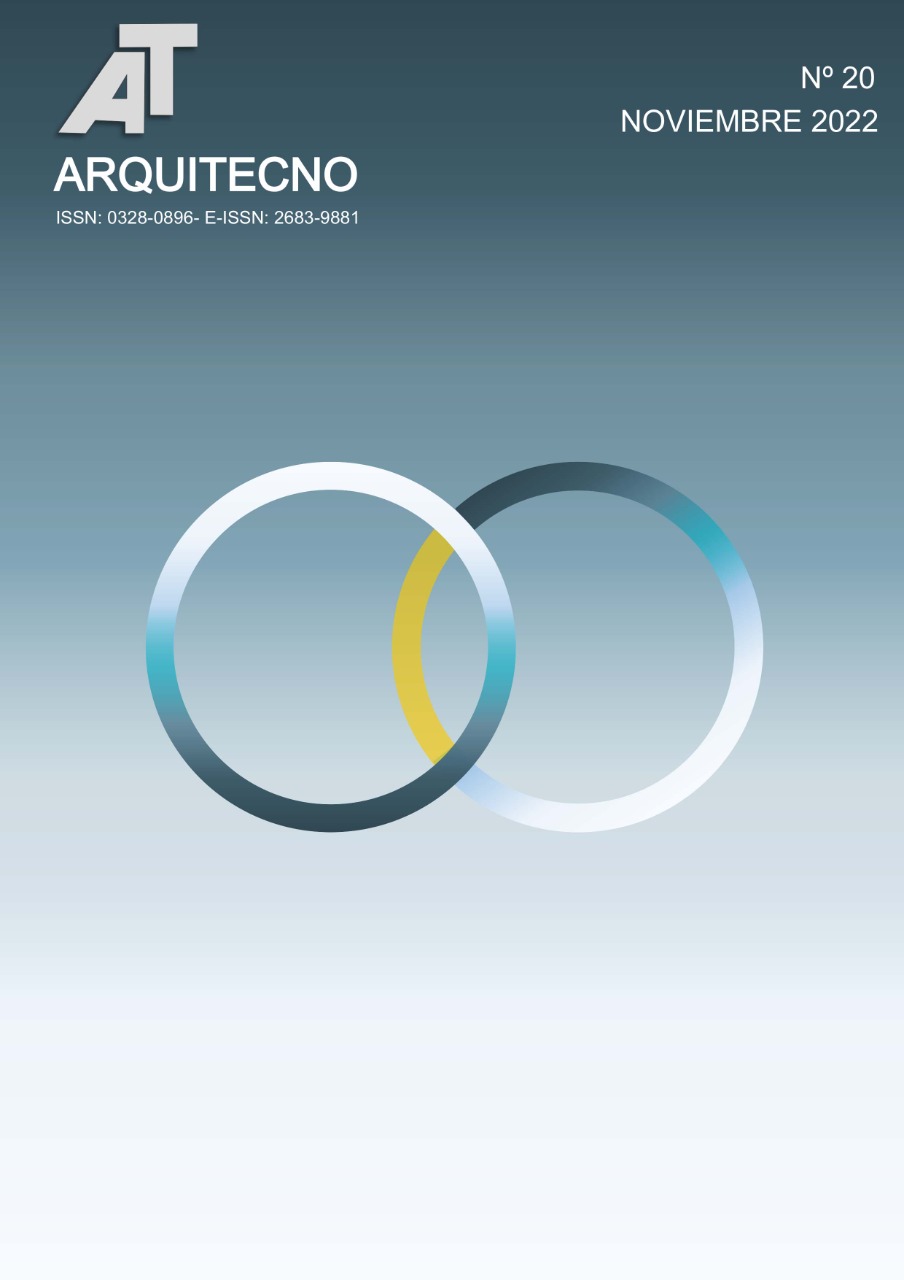Análisis del comportamiento térmico de una vivienda en un clima seco desértico. Fortalezas constructivas que permiten valorar su carácter patrimonial
DOI:
https://doi.org/10.30972/arq.0206254Palabras clave:
Comportamiento térmico, fortalezas constructivas, carácter patrimonialResumen
La contaminación por dióxido de carbono (CO2) va en aumento y, en Argentina, el sector de la construcción es responsable del 40 %. Para disminuir el impacto las emisiones, los edificios existentes requieren soluciones de adaptación. El objetivo de este trabajo es identificar las fortalezas constructivas que presentan viviendas de carácter patrimonial quebenefician su comportamiento térmico. El caso de estudio se ubica en Mendoza, Argentina. Se realizaron mediciones in situ durante la temporada de invierno. Los resultados demuestran fortalezas constructivas relacionadas con la inercia térmica. Con amplitudes térmicas exteriores diarias de 15 °C; los ambientes interiores presentan amplitudes inferiores a 3 °C en planta alta y, entre 7 y 8 °C, en planta alta (queda evidenciado el impacto del techo: expuesto y liviano, sin aislación). Como conclusión se afirma que, en un clima árido,edificios con características constructivas másicas, presentan fortalezas constructivas que potencian su comportamiento térmico.Citas
Azari, Rahman & Abbasabadi, Narjes (2018). “Embodied energy of buildings: A review of data, methods, challenges, and research trends”, Energy and Buildings, 168, 225-235. Doi:10.1016/j.enbuild.2018.03.003
Bullen, Peter & Love, Peter (2010). “The rhetoric of adaptive reuse or reality of demolition: views from the field”, Cities Journal, 27 (4), 215-224.
Centro de Investigación en Tecnologías de la Construcción, Universidad del Bío Bío, Citec UBB (2012). Manual de Diseño Pasivo y Eficiencia Energética en Edificios Públicos. Santiago de Chile: Sociedad Impresora R&R Ltda.
Cirvini, Silvia y Manzini, Lorena (2016). “Diagnóstico y evaluación de las viviendas en el patrimonio arquitectónico de Mendoza, Argentina”, Apuntes, 29(1), 44-59. Doi: http://dx.doi.org/10.11144/Javeriana.apc29-1.devp
Esteves, Alfredo, Gelardi, Daniel y Oliva, Alejandro. (1997) The Shape in the Bioclimatic Architecture: The FAEP Factor. En: II International Conference of Teachers of Architecture. Florencia:
Evans, Julián (2010). Sustentabilidad en arquitectura 1. Compilación de antecedentes de buenas prácticas ambientales para las obras de arquitectura, junto a indicadores de sustentabilidad y eficiencia energética. Argentina: Consejo Profesional de Arquitectura y Urbanismo (CPAU)
Flores Larsen, Silvana, Filippín, Celina, Barea, Gustavo (2019). “Impact of climate change on energy use and bioclimatic design of residential buildings in the 21st century in Argentina”, Energy and Building, 184, 216-229. Doi:doi.org/10.1016/j.enbuild.2018.12.015
Ganem, Carolina (2006). Rehabilitación ambiental de la envolvente de viviendas. El caso de Mendoza. Tesis Doctoral. Barcelona: Universidad Politécnica de Cataluña
Instituto Argentino de Normalización y Certificación (2002). “Norma 11.601: Aislamiento térmico de edificios. Métodos de cálculo. Propiedades térmicas de los componentes y elementos de construcción en régimen estacionario”. Tercera edición 2002-10-10
International Energy Agency (2019). “Buildings. A source of enormous untapped efficiency potential” [20 de agosto de 2019]. Disponible en: https://www.iea.org/topics/buildings
Kipp & Zonen (s.f.). “Piranómetros” [20 de agosto de 2020]. Disponible en: https://www.kippzonen.es/ProductGroup/86/Piranometros
Köppen, Wladimir (1936). Das geographische System der Klimate. Gebrüder Borntraeger: Berlin, Germany.
Van Bueren, Ellen & De Jong, Jitske (2007) “Establishing sustainability: policy successes and failures”, Building Research and Information Journal, 35 (5), 543-556. Doi: https://doi.org/10.1080/09613210701203874
Descargas
Publicado
Cómo citar
Número
Sección
Licencia
Los autores ceden a Arquitecno los derechos de publicación de sus trabajos, toda vez que hayan sido admitidos como parte de alguno de sus números. Ellos, no obstante, retienen los derechos de propiedad intelectual y responsabilidad ética así como la posibilidad de dar difusión propia por los medios que consideren.





52.jpg)
